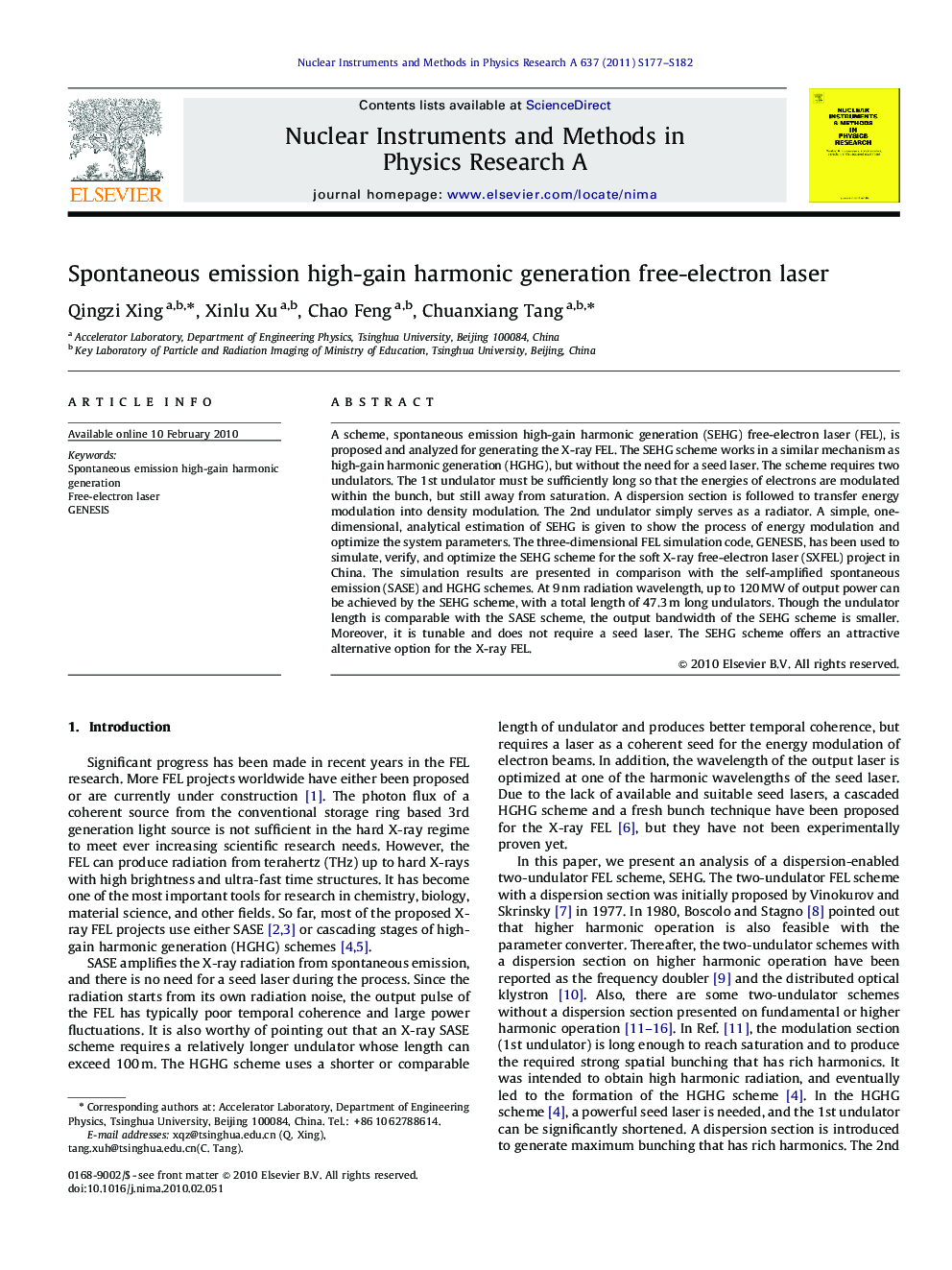| Article ID | Journal | Published Year | Pages | File Type |
|---|---|---|---|---|
| 1825398 | Nuclear Instruments and Methods in Physics Research Section A: Accelerators, Spectrometers, Detectors and Associated Equipment | 2011 | 6 Pages |
A scheme, spontaneous emission high-gain harmonic generation (SEHG) free-electron laser (FEL), is proposed and analyzed for generating the X-ray FEL. The SEHG scheme works in a similar mechanism as high-gain harmonic generation (HGHG), but without the need for a seed laser. The scheme requires two undulators. The 1st undulator must be sufficiently long so that the energies of electrons are modulated within the bunch, but still away from saturation. A dispersion section is followed to transfer energy modulation into density modulation. The 2nd undulator simply serves as a radiator. A simple, one-dimensional, analytical estimation of SEHG is given to show the process of energy modulation and optimize the system parameters. The three-dimensional FEL simulation code, GENESIS, has been used to simulate, verify, and optimize the SEHG scheme for the soft X-ray free-electron laser (SXFEL) project in China. The simulation results are presented in comparison with the self-amplified spontaneous emission (SASE) and HGHG schemes. At 9 nm radiation wavelength, up to 120 MW of output power can be achieved by the SEHG scheme, with a total length of 47.3 m long undulators. Though the undulator length is comparable with the SASE scheme, the output bandwidth of the SEHG scheme is smaller. Moreover, it is tunable and does not require a seed laser. The SEHG scheme offers an attractive alternative option for the X-ray FEL.
